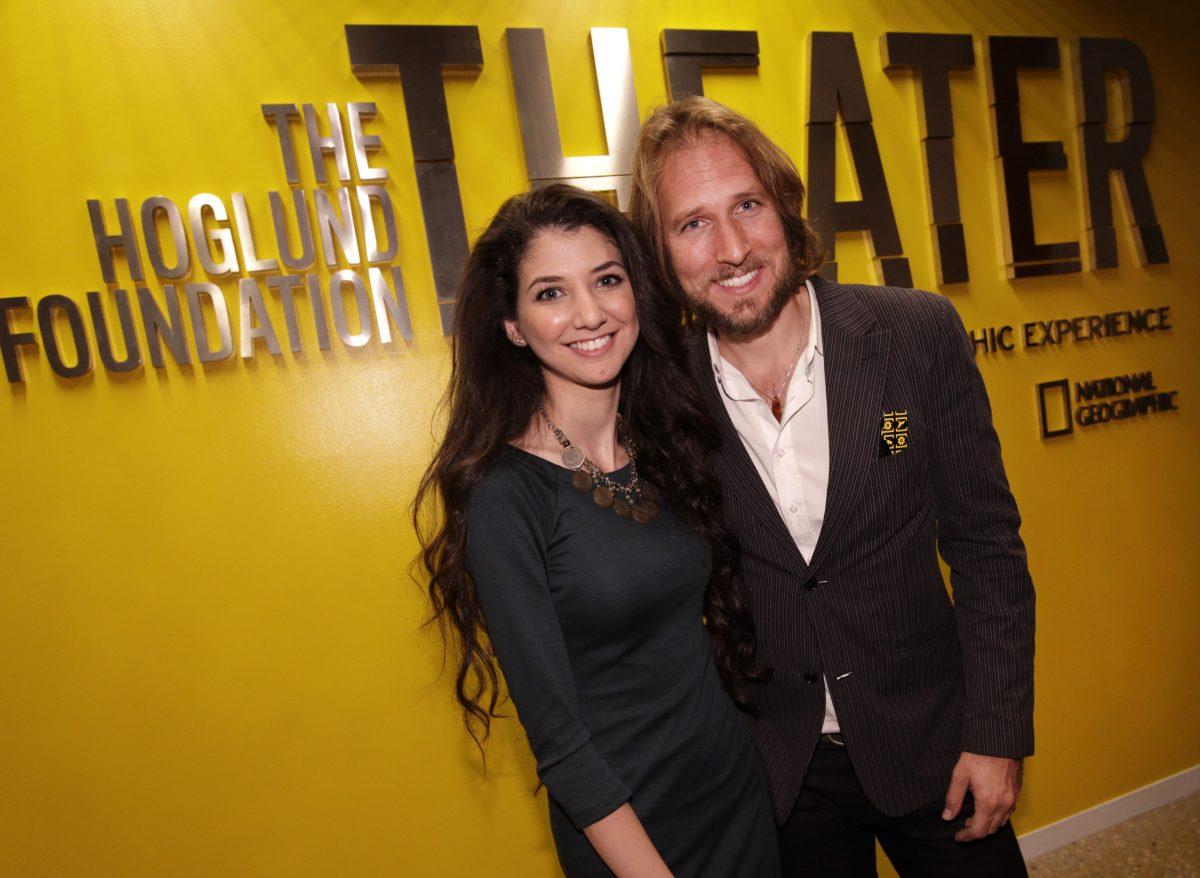Film highlights life of women of different religions in holy city
Almost all 297 seats were filled at the Perot Museum’s Hoglund Foundation Theater on Dec. 3 for the premiere of “Jerusalem 3D.” The film follows the stories of three young women and their families, all of whom practice one of the three Abrahamic faiths: Islam, Judaism and Christianity. One of those young women happened to be a UTD student.
Farah Ammouri, a neuroscience junior, is a Muslim whose family and ancestors have been in Jerusalem for thousands of years.
“Jerusalem, to me, is more than just a city. It’s beauty, it’s spirit and it’s also my religion,” Ammouri says in the first few lines of the film. “But, most importantly, it’s my family. Most people don’t think I’m Muslim. It’s only when I go to the mosque and put a headscarf (on), and it surprises them. Jerusalem is full of surprises.”
Ammouri, who moved to the U.S. in her late teens, transferred from Collin College and started at UTD this fall. She attended a Catholic school in Jerusalem as a teenager and was 15 when she was selected to be a part of the film out of the hundreds of applications. The selection was coined “Jerusalem Idol” by Daniel Ferguson, writer and director of the film.
“Within the Palestinian community, there are both Muslims and Christians. In fact, a majority of the girls in my school were Muslims in the Catholic school. Our principals and supervisors were nuns,” Ammouri said. “A nun walked into our class and asked for girls who would like to participate in a National Geographic movie (related) to Jerusalem. I auditioned and, after a couple of months, I heard back from the director that I was chosen as the Muslim girl for the movie and it started from there.”
Ammouri had the opportunity to travel to cities such as Toronto, Cincinnati, Washington and Los Angeles for the film. Throughout the process, she said she gained insight on what religion and culture signify in various communities.
“When I came here, I grew up in a very conservative society where religion was primarily your most important thing and is connected to your culture (and) is rooted in you. I was surrounded by religion my whole life. When I came here, I noticed that not a lot of people have this attachment,” Ammouri said. “That’s something that’s really important for the movie here. I feel like this movie is eye-opening to people who are not really attached. You don’t have to have a certain religion to watch it. You just have to be open-minded.”
Ferguson, who made 14 trips to Jerusalem and spent six months living in the city with his family, was initially hesitant to make the film.
“I didn’t actually want to make this movie at first, to be honest. I was totally terrified of how we were going to do the subject justice. It’s pretty explosive — to use a tricky word — and difficult to get right in 45 minutes for audiences who come to science museums like this,” Ferguson said. “So, initially, I asked for three months to just read material on Jerusalem. Then I started to travel there and tried to figure out a story that was novel. It was important for me to do something different. I watched all the movies I could see on Jerusalem and there (are) amazing films, (but) most of them are about the conflict. This is not about the conflict. It’s about the reason we all relate to and why we all love Jerusalem in our own ways.”
This eventually led to the thorough and rigorous casting process. Ferguson said he wanted to cast against the stereotypical image of what an individual would look like based on their culture or religion.
“I wanted to cast against type. Initially, I didn’t want the audience to know which religion or culture the girls were,” Ferguson said. “I wanted the audience to guess and be a little confused, because that is what Jerusalem does to you.”
He wanted each cast member to present places that would show viewers a tale of Jerusalem from her eyes. Ammouri took Ferguson to various places that she cherishes, from the streets where residents purchase their groceries and eat spicy foods to the historical religious landmarks.
“I took (Ferguson) to the old city of Jerusalem, where the movie was shot. I (also) took him to Damascus Gate. We went to the Al-Aqsa Mosque and the Dome of the Rock, which is on the noble sanctuary. I took him to where I usually go with my mother,” Ammouri said. “Going into the movie, I wanted a movie that introduces a new perspective, a new image of Jerusalem that I know, that I live by every day.”
“Jerusalem 3D” took about five years and had a budget of approximately $8.5 million. From getting permission to film at various historically sacred sights to revising the script and meticulously capturing Jerusalem in a way that would portray the city far from the stereotypical perspective of a land filled with conflict, Ferguson and Ammouri said they hope viewers can be captivated by this vision.
“(The film) is not a tell-all documentary. It doesn’t even mention the word Israel and Palestine once, and that’s very deliberate,” Ferguson said. “It’s brand Jerusalem and what that means for everyone. It’s meant to be inclusive. It’s not about good guys or bad guys or Team A or Team B or who’s right and who’s wrong and who was there first and who wasn’t there first. That’s just mud-slinging. It’s about what’s beyond politics and what’s beyond conflict.”





